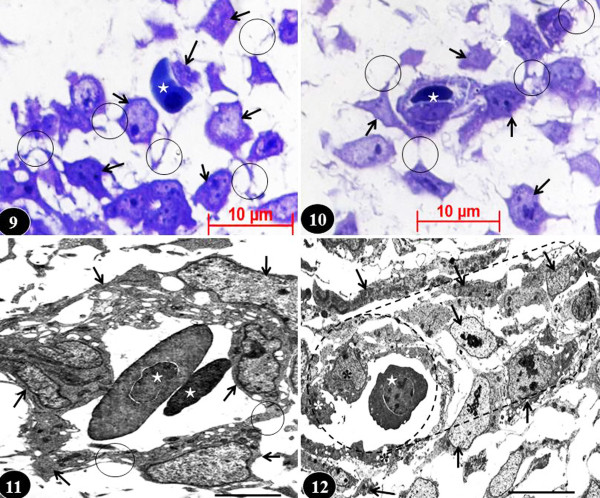Figure 6 .
Developing chicken lung. Figure 9: Radical transformation of mesenchymal cells into characteristically stellate angioblasts (arrows) with conspicuous filopodia (circles) (which allow them to move) and into hemopoietic cells, i.e., red blood cells (star), at the fourth day of embryonic lung development. Toluidine stained section. Figure 10: Angioblasts (arrows) moving to surround a red blood cell (star) on the fifth day of embryonic lung’s development to form a blood vessel. Circles, filopodia. Toluidine stained section. Figure 11: Angioblasts (arrows) surrounding red blood cells (stars) in the developing lung on the sixth day of embryonic life forming a blood vessel. Circles, filopodia connecting angioblasts to form the vessel lumen. Figure 12: A blood vessel with a well-defined lumen in the lung of a seven day old embryo. Arrows, angioblasts forming the wall; asterisks, endothelial cells; star, red blood cell; dashed cylindrical shape, orientation of the blood vessel. These changes occur under the influence of VEGF. Figures 11 and 12 are transmission electron micrographs. Scale bars: Figure 11, 10 μm; Figure 12, 15 μm.

